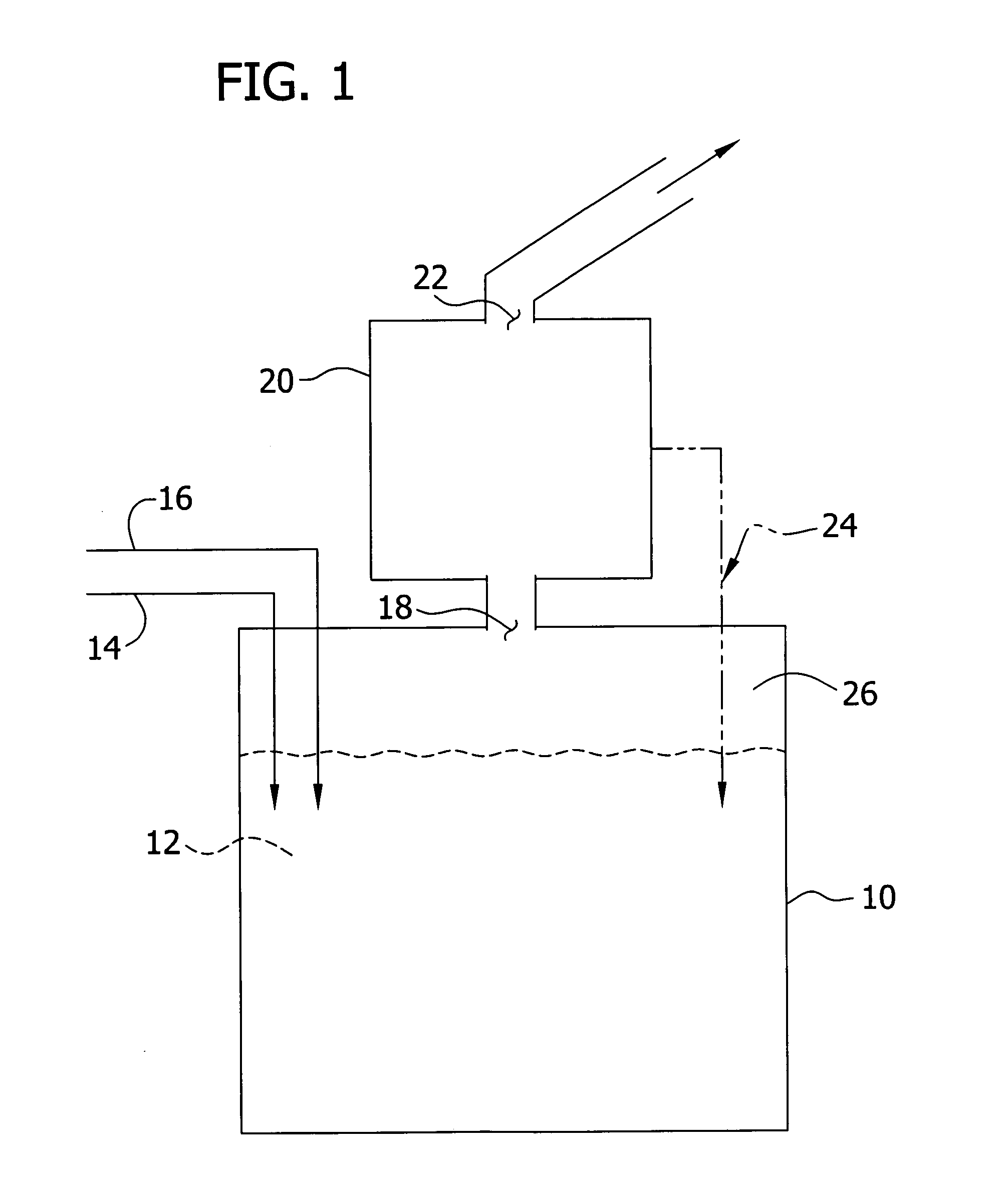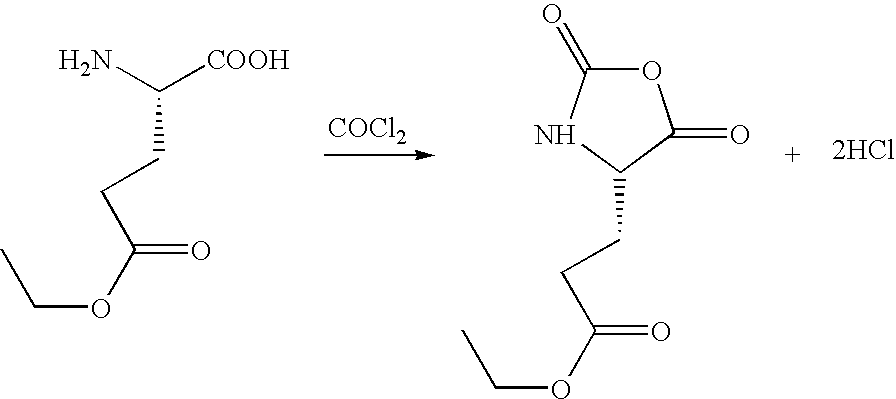Synthesis of amino acid, N-carboxyanhydrides
- Summary
- Abstract
- Description
- Claims
- Application Information
AI Technical Summary
Benefits of technology
Problems solved by technology
Method used
Image
Examples
example 1
Preparation of L-Glutamic Acid N-Carboxyanhydride, γ-Ethyl Ester
[0033]
[0034] In this Example, a stirred mixture of 30 liters anhydrous tetrahydrofuran and 5,000 g (28.54 moles) L-glutamic acid, γ-ethyl ester, which had been vacuum dried over 500 g sodium hydroxide pellets, was purged with nitrogen below liquid surface at 0.5 liters / min and 25° C. for 30 minutes. The nitrogen purge was increased to 4 liters / min and 5,650 g (57.08 moles) gaseous phosgene was added at 25° C. over 1.5 hours. The phosgene was refluxed back into the reaction vessel using a dry ice / acetone reflux condenser and the reaction exotherm was allowed to increase the reaction mixture temperature up to 60° C. After the phosgene was added, the reaction mixture was heated at 50°-60° C. for 15 minutes until the solids disappeared and a clear solution resulted. The dry ice and acetone were removed from the reflux condenser and the reaction mixture was purged with nitrogen at 4 liters / min and 50°-55° C. for 30 minutes....
example 2
Preparation of L-Glutamic Acid N-Carboxyanhydride, γ-Benzyl Ester
[0035]
[0036] In this Example, a stirred mixture of 3.3 liters anhydrous tetrahydrofuran and 466 g (1.96 moles) L-glutamic acid, γ-benzyl ester, was purged with nitrogen below liquid surface at 0.5 liters / min and heated to 45° C. over 30 minutes. The nitrogen purge was increased to 2 liters / min and 389 g (3.93 moles) gaseous phosgene was added at a rate to maintain a reaction mixture temperature of 50°-65° C. over 10 minutes. The phosgene was refluxed back into the reaction vessel using a dry ice / acetone reflux condenser. After the phosgene was added, the reaction mixture was heated at 50°-65° C. for 25 minutes until the solids disappeared and a clear solution resulted. The dry ice and acetone were removed from the reflux condenser and the reaction mixture was purged with nitrogen at 4 liters / min and 50°-65° C. for 30 minutes. The tetrahydrofuran and excess phosgene were removed by vacuum stripping at 50°-65° C. down t...
example 3
Preparation of N6-CBZ-L-Lysine N-Carboxyanhydride
[0037]
[0038] In this Example, a stirred mixture of 3.2 liters anhydrous tetrahydrofuran and 400 g (1.42 moles) N6-CBZ-L-lysine, was purged with nitrogen below liquid surface at 0.5 liters / min and heated to 50° C. over 30 minutes. The nitrogen purge was increased to 2 liters / min and 282 g (2.85 moles) gaseous phosgene was added at a rate to maintain a reaction mixture temperature of 50°-65° C. over 5 minutes. The phosgene was refluxed back into the reaction vessel using a dry ice / acetone reflux condenser. After the phosgene was added, the reaction mixture was heated at 50°-65° C. for 15 minutes until the solids disappeared and a clear solution resulted. The dry ice and acetone were removed from the reflux condenser and the reaction mixture was purged with nitrogen at 4 liters / min and 50°-65° C. for 30 minutes. The tetrahydrofuran and excess phosgene were removed by vacuum stripping at 50-65° C. down to 100 mm Hg whereupon the concentr...
PUM
| Property | Measurement | Unit |
|---|---|---|
| Percent by mass | aaaaa | aaaaa |
| Weight | aaaaa | aaaaa |
Abstract
Description
Claims
Application Information
 Login to View More
Login to View More - R&D
- Intellectual Property
- Life Sciences
- Materials
- Tech Scout
- Unparalleled Data Quality
- Higher Quality Content
- 60% Fewer Hallucinations
Browse by: Latest US Patents, China's latest patents, Technical Efficacy Thesaurus, Application Domain, Technology Topic, Popular Technical Reports.
© 2025 PatSnap. All rights reserved.Legal|Privacy policy|Modern Slavery Act Transparency Statement|Sitemap|About US| Contact US: help@patsnap.com



